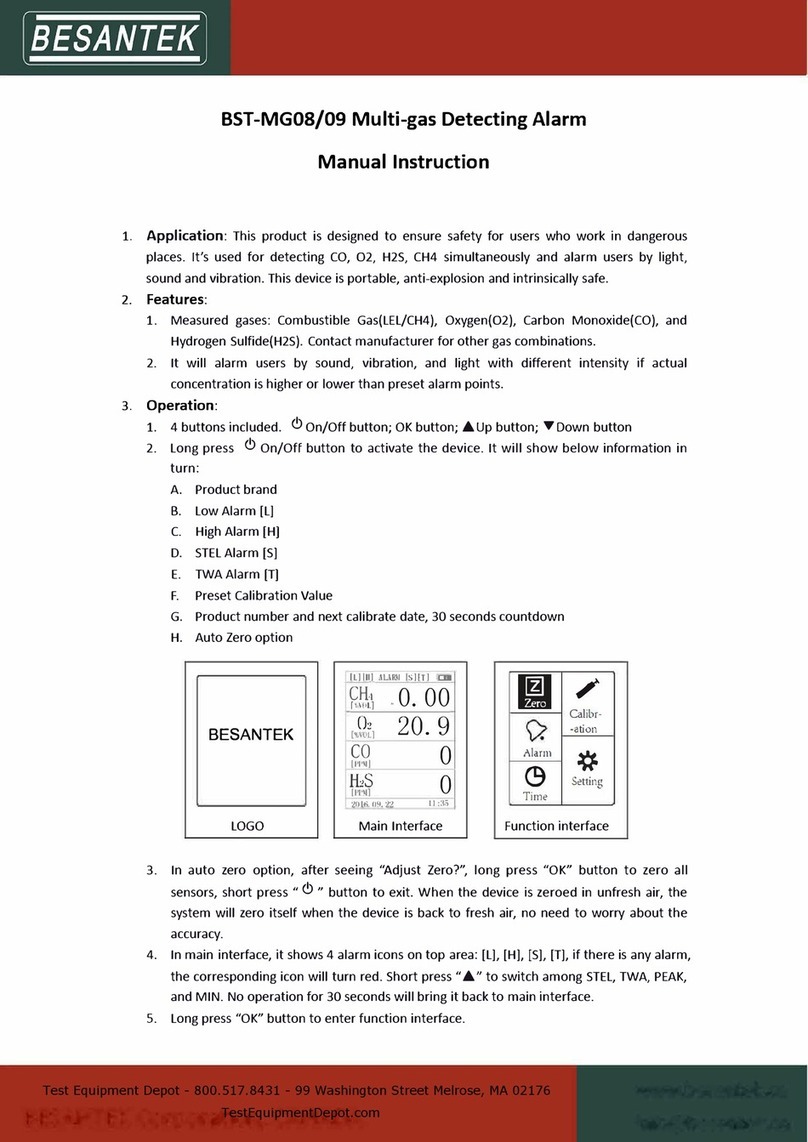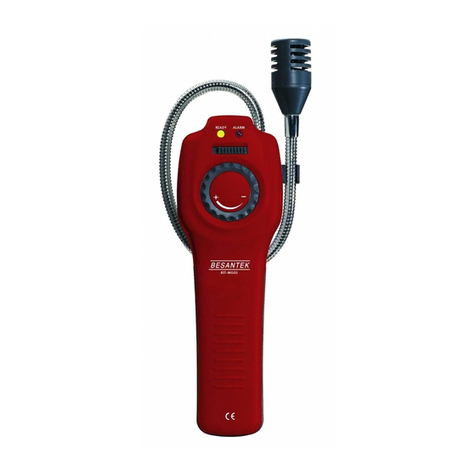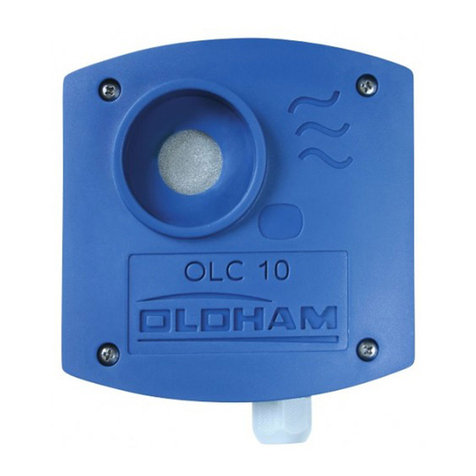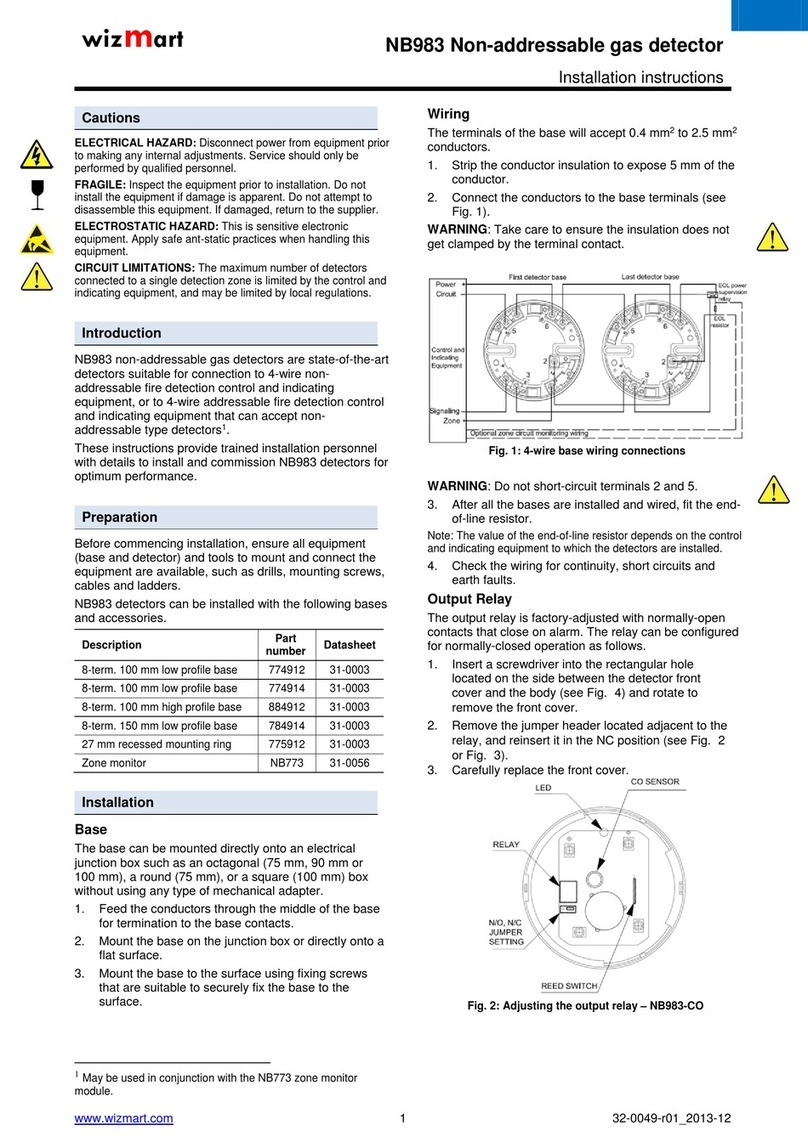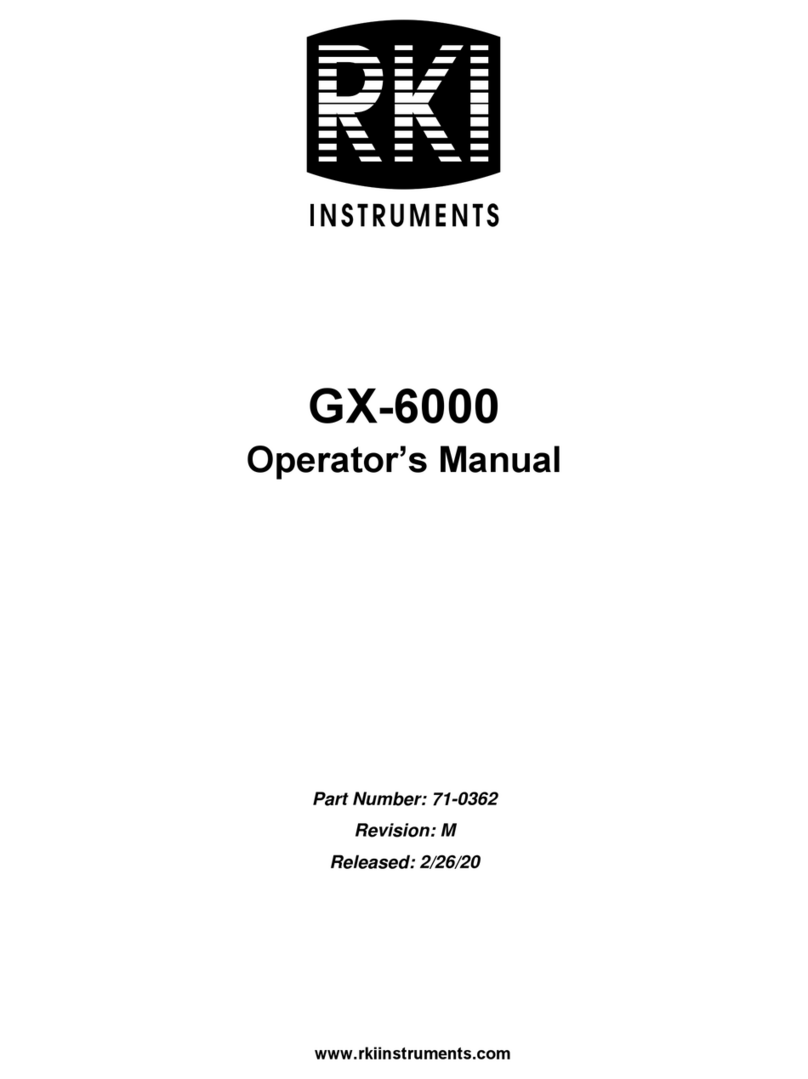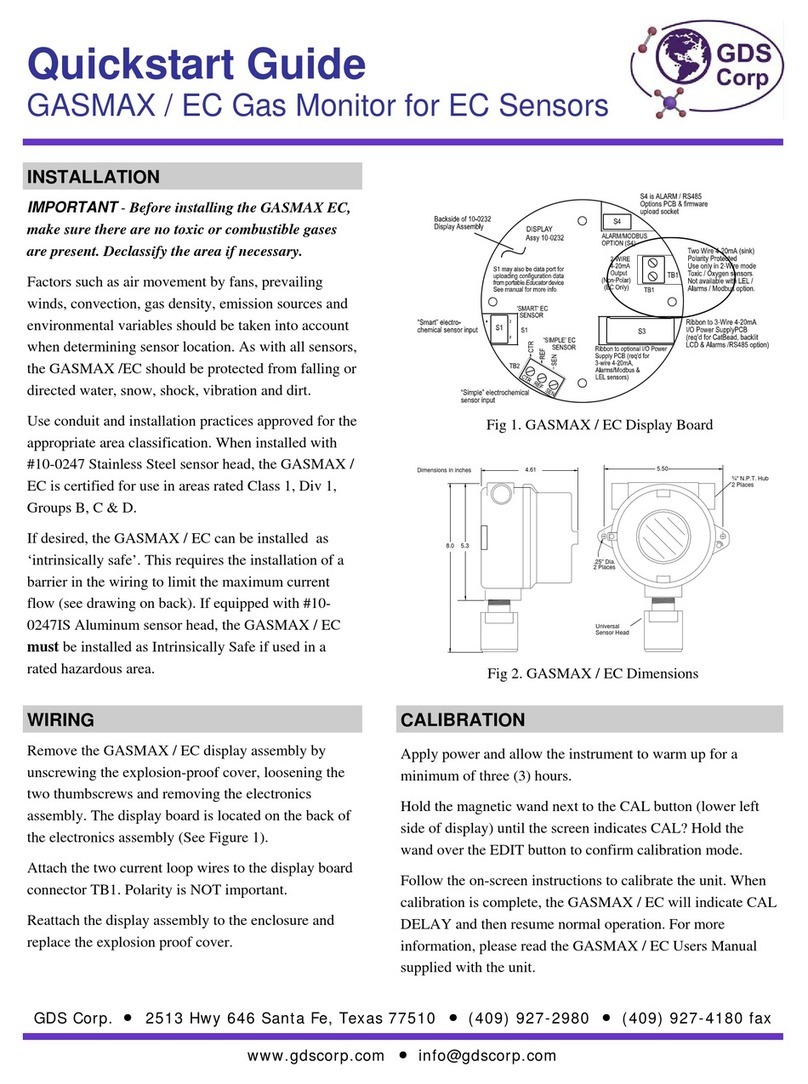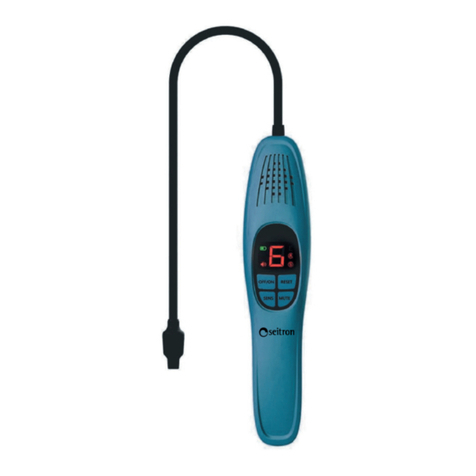
Instructions
Switch on the gas-leak detector by sliding the ON/OFF button and the READY light is glowing.
The Combustible Gas Leak Detector runs through a one-minute warm-up and self-zeroing
sequence when it is first turned on in fresh air. The alarm of the instrument may very loud
without contact any gas. That is caused by the high Tic Rate preset in rotary wheel.
Rate (Sensitivity) Adjustment
Each time the instrument is put into service, you should conduct a quick functional test. Adjust
the Tic Rate to non-alarm level. Then, simply expose the sensor to a known leak, like a
cigarette lighter, or pass the probe over a drop of combustible fluid. After the initial warm-up,
the instrument can be used to detect combustible gasses. When the sensor in the probe tip
detects a combustible gas, the tic rate will increase and the instrument sounds a warbling
tone while the ALARM light. As the concentration of gas increases so does the tic rate.
If the situation calls for quiet operation, or if background noise makes it difficult to hear the
built-in speaker, you can use an earphone. The jack is at the top of the instrument. Note that
listening to the alarm or tic through the earphone is very loud.
If the READY light is off, the batteries are low. They should be replaced immediately. Low
batteries will adversely affect the instrument’s reliability. See the replacement procedures.
Adjusting the Tic Rate(Sensitivity)
The tic rate tells you when the sensor (in the tip of the instrument) is getting close to a leaking
gas. You can control the tic rate using the rotary wheel in the center of the instrument.
zMove the wheel clockwise to increase the frequency
zMove the wheel counter-clockwise to decrease the frequency
A tic rate of 4 to 8 tics per second, in fresh air, is typical. As the sensor comes near a
combustible gas source, the tic rate increases. In order to isolate the source of a leak, you
may need to move the wheel counter clockwise, decreasing the sensitivity, as the sensor
moves closer.
Replacing the Batteries
Replace your 1.5 volt /size R14C(B) alkaline batteries when:
• The green READY light off
• No light or other activity occurs upon turning the instrument on
To replace the batteries:
1. Lay the instrument face-down on a back face.
2. Remove the battery cover. Apply upward pressure to the tab at the bottom of the battery
cover while lifting it out.
3. Remove the batteries using a coin or screwdriver, if necessary, to pry them out.
4. Replace all three batteries with new ones.
Replacing the Sensor
Although the sensor is designed to offer many years of reliable service, it may become
inoperable if it is submerged in liquid or otherwise physically damaged.
To replace sensor:
1. Turn the instrument off
2. Remove the upper tip guard by pressing straight up from the alignment notch that
separates the two halves of the tip guard.
3. This is a sturdy component, but use caution bending its leads.
4. Pull the sensor straight up from its tip housing.






